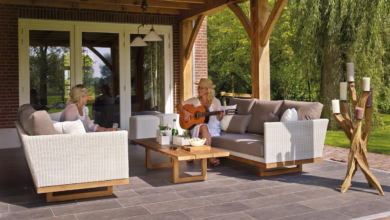7 Ways to Vet a Neighborhood’s Safety Before You Move
KEY TAKEAWAYS
Moving is a huge decision. Aside from assessing the property, you need to consider the neighborhood as a whole, including how safe it is. Whether you’re moving alone, with a partner or with children, you need to feel confident in everyone’s security. Here are seven ways to vet a neighborhood’s safety before moving.
1. Research Crime Rates
One of the most essential things you can do to keep your family safe is to research neighborhood crime rates before you move in. It’s easier to do than you might think. Many websites and databases can show the crime rate of various cities and neighborhoods. The more populated the city is, the more likely you are to find statistics. It makes sense that where more people reside, more conflict will arise, but don’t let that deter you from living in a city. Many have plenty of neighborhoods with a good safety record.
The following websites offer crime statistics for many United States locations.
● USAGov
● Bureau of Justice Statistics
● Data.gov
● FBI
While a high local crime rate is a red flag, there are other things to investigate before you decide to explore or avoid a neighborhood.
2. Check the Sex Offender Registry
People who commit sex crimes must be listed on the sex offender registry for at least a decade after serving their time. Knowing who resides around the homes you look at can help you prevent living around someone who could potentially put you or your family at risk. While most sex offenders do not reoffend, recidivism does occur. It’s up to you to decide what’s best.
You can check the National Sex Offender Public Website or research state or municipal resources.
3. Visit After Dark
You may go to an open house during the day when people aren’t home and it’s easy to see what’s happening. Visiting in the evening can help you better understand the place.
Neighborhoods can change when the sun goes down. You can get to know a neighborhood by how people behave after dark. Drive through and see if people are out socializing or tucked in their homes. Are there rowdy groups or suspicious activities? Avoid putting yourself in harm’s way, but checking things out in the evening can give you a better idea of how the neighborhood operates.
Keep an eye out for active security systems. If there are many motion-detection lights, visible cameras or heavy-duty gate locks, it could mean there was a crime nearby. Alternatively, areas that are consistently well-lit and in good operating condition in the evening often indicate a low-crime community.
4. Contact Local Authorities
You can learn a lot from your research, but you can also get firsthand accounts of a neighborhood’s safety by contacting the local police department. Remember to call a nonemergency number. You don’t want to make a poor first impression by wasting a first responder’s time.
You can ask an officer many questions, and most are forthcoming about the crime in their jurisdiction. Consider asking the following:
● How often does a significant crime happen in this neighborhood?
● What are the most common crimes here?
● How often do you patrol my potential street?
● Have you responded to disturbances from my potential neighbors?
● How quick is the typical response time in an emergency?
● Would you advise someone to move to the neighborhood?
● What should I know before moving in?
The officers who serve the neighborhood will have statistics and personal experience you can use to make the best decision.
5. Check Out Local News Stations
You can often find a ton of information about a community via the local news. Search newspapers and broadcast news websites for your future street name, nearby street names, the town and local businesses to see if there are any recent stories about unsafe situations.
Local news often offers an unbiased look into the worst and best of a town. You can learn about crime, road safety, accidents, resident concerns and community activities. A local news station will cover it all, from block parties to burglaries.
If you have access, consider watching the broadcasts or listening to local radio news stations to get a full picture of events. You can often find out more about the community’s personality through interviews and commentaries that you might not find on the website.
6. Visit Community Events
To learn about a neighborhood, talk to the people. You don’t have to go door to door to strike up a conversation. By visiting a community fair, holiday celebration, church service or sports game, you can get to know the people who will live around you. After an icebreaker or two, ask what they know about the neighborhood and if they’d want to live there. You might even meet a future neighbor.
Explain that you haven’t purchased a home there yet and would like their honest opinion. If someone thinks you are already committed to a property, they might lie so you don’t feel bad. Attending public events can also give you an idea of how friendly the community is and if you would feel comfortable participating.
7. Join Social Media Pages
It’s no secret that people rant on social media. A screen acts like an invisible shield — many people feel more comfortable expressing their feelings and true personalities online. You can use this to your advantage by browsing community groups on Facebook and looking at the comments on community businesses’ Instagram photos and other major social media pages.
Look at local business review pages and those from community parks and festivals. You can understand the major and minor problems community members face. However, remember that there are two sides to every story. One person’s negative reaction may not properly reflect a situation.
The more you interact with different aspects of your neighborhood and the surrounding town, the more you can know their safety.
Vetting a Neighborhood’s Safety Before You Close
Only commit to a neighborhood after you know that you and your household will be safe. If you wouldn’t feel comfortable walking a dog, letting your kids play in your yard or running to the store in the evening, you might not want to live there. You can determine whether it’s a safe place to settle by talking to authorities, getting neighbors’ opinions and researching.





